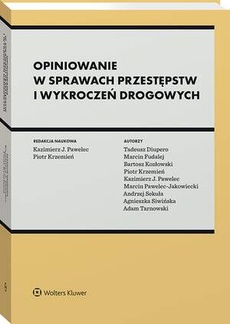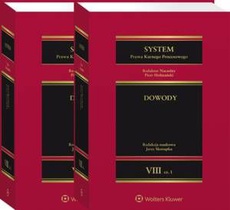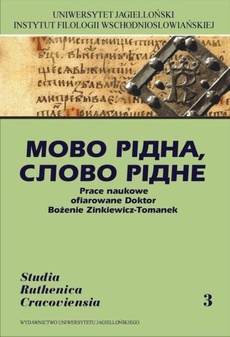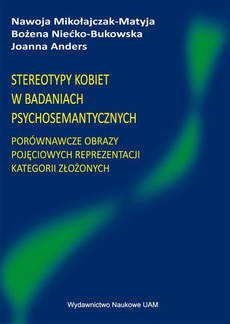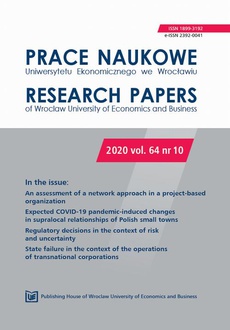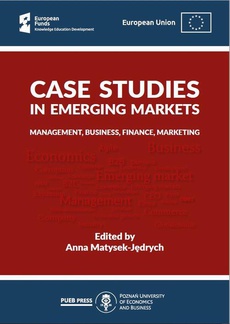INNE EBOOKI AUTORA
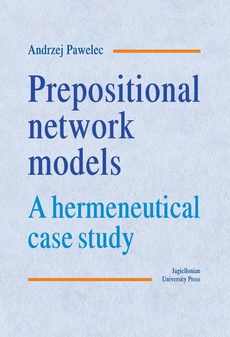
Prepositional Network Models. A hermeneutical case study
Autor:
Format:
ibuk
e-ISBN: 978-83-233-8553-0
Primarily, it presents an ongoing debate in cognitive linguistics about the modelling of prepositional polysemy, known as "the story of over". Additionally, it discusses a Polish counterpart - "the story of za(-)" (a preposition and a verbal prefix). Its further aim is to reveal a deep divergence of perspectives between the cognitive and hermeneutical approaches to the meaning of words. The argument could be summarised as follows: the issue of the representation of lexical senses (available out of context) presupposes the issue of distinct meanings of words in communal use, which in turn presupposes the question of the transformative power of words (in linguistics, articulated by Humboldt as energeia). In short, the book proposes to complement a post hoc static cognitive approach with a dynamic "expressive" one.
Andrzej Pawelec teaches cognitive linguistics and translation in the Institute of English Philology, Jagiellonian University, Krakow. His research, in general, is focused on the communal background of symbolic meaning. In linguistics, he aims to probe current theories from the vantage point provided by the "expressive" conception of language, as developed in philosophical hermeneutics (Merleau-Ponty and Charles Taylor being his main sources of inspiration). He has published two books so far. In Znaczenie ucieleśnione (2005) ["Embodied meaning"], he opposes the cognitive position on the "embodiment of meaning", as described by Lakoff and his associates, to the hermeneutical interpretation of this notion in terms of articulation. In Metafora pojęciowa a tradycja (2006) ["Conceptual metaphor and tradition"], he offers a critique of the cognitive theory of metaphor in terms of the "interactive theory" and the "Romantic tradition".
| Rok wydania | 2009 |
|---|---|
| Liczba stron | 194 |
| Kategoria | Językoznawstwo |
| Wydawca | Wydawnictwo Uniwersytetu Jagiellońskiego |
| ISBN-13 | 978-83-233-2868-1 |
| Numer wydania | 1 |
| Język publikacji | polski |
| Informacja o sprzedawcy | ePWN sp. z o.o. |
POLECAMY
Ciekawe propozycje
Spis treści
| INTRODUCTION | 7 |
| CHAPTER 0. THE HERMENEUTICAL SITUATION | 17 |
| 0.0. Introductory remarks | 17 |
| 0.1. The hermeneutical perspective | 17 |
| 0.2. Prototype effects and categorization | 22 |
| 0.3. Cognitive linguistics as prototype semantics | 34 |
| 0.4. The intractability of polysemy | 42 |
| 0.5. A recapitulation | 51 |
| CHAPTER 1. NETWORK MODELS: FOUNDATIONAL ACCOUNTS | 55 |
| 1.0. Introductory remarks | 55 |
| 1.1. Motivations behind the Langackerian and Lakoffian model | 57 |
| 1.2. Schematic networks | 61 |
| 1.2.1. A resume of Langacker’s position | 61 |
| 1.2.2. A discussion | 66 |
| 1.3. Radial categories | 70 |
| 1.3.1. A resume of Lakoff’s radial model of over | 72 |
| 1.3.2. A critique | 75 |
| 1.4. Concluding remarks | 77 |
| CHAPTER 2. THE STORY OF over | 81 |
| 2.0. Introductory remarks | 81 |
| 2.1. A consistently imagistic model | 81 |
| 2.2. A three-level account | 85 |
| 2.3. A principled polysemy network | 88 |
| 2.4. The case of (all) over | 98 |
| 2.5. A discussion | 102 |
| CHAPTER 3. THE STORY OF za(-) | 107 |
| 3.0. Introductory remarks | 107 |
| 3.1. A network model of the preposition za | 108 |
| 3.2. A network model of the verbal prefix za- | 114 |
| 3.3. Some diachronic observations on the prefix za- | 118 |
| 3.4. A discussion | 125 |
| CHAPTER 4. COGNITIVE “DIACHRONY WITHIN SYNCHRONY”? | 131 |
| 4.0. Introductory remarks | 131 |
| 4.1. Saussure: synchrony vs. diachrony | 131 |
| 4.2. Logical diachrony: the case of “length, width, and potential passing” | 135 |
| 4.3. The status of network models | 143 |
| CHAPTER 5. THE HERMENEUTICAL CODA | 151 |
| 5.0. Introductory remarks | 151 |
| 5.1. Language, thought, and reality | 152 |
| 5.1.1. Teaching chimps symbols | 157 |
| 5.1.2. The mimetic origins of language | 162 |
| 5.1.3. First words of a child | 165 |
| 5.1.4. Words as “stopping orders” | 166 |
| 5.1.5. The Sapir-Whorf hypothesis | 167 |
| 5.2. The formalism of linguistics: a Gadamerian view | 172 |
| 5.3. A plea for “expressive” linguistics | 176 |
| REFERENCES | 181 |

